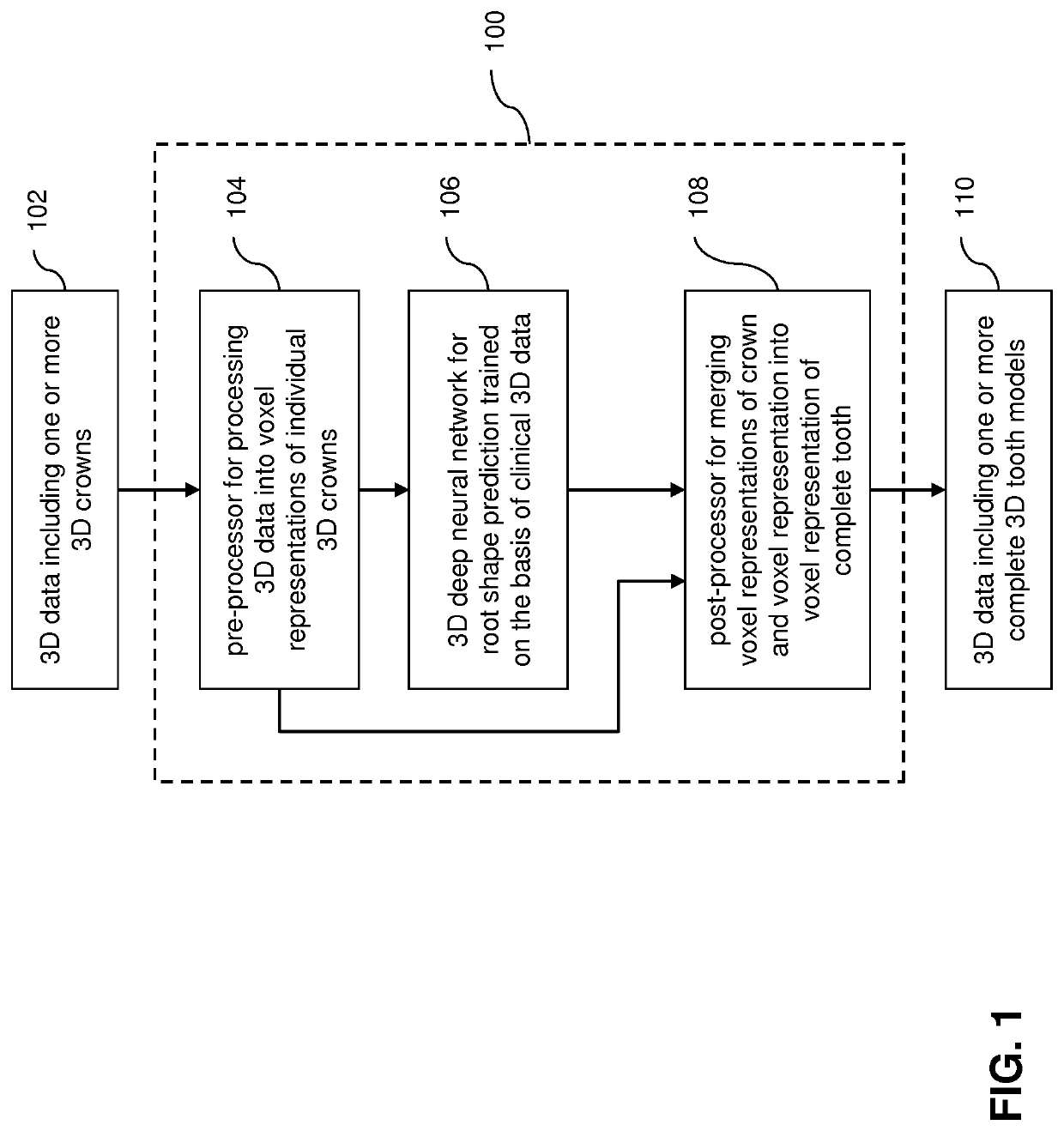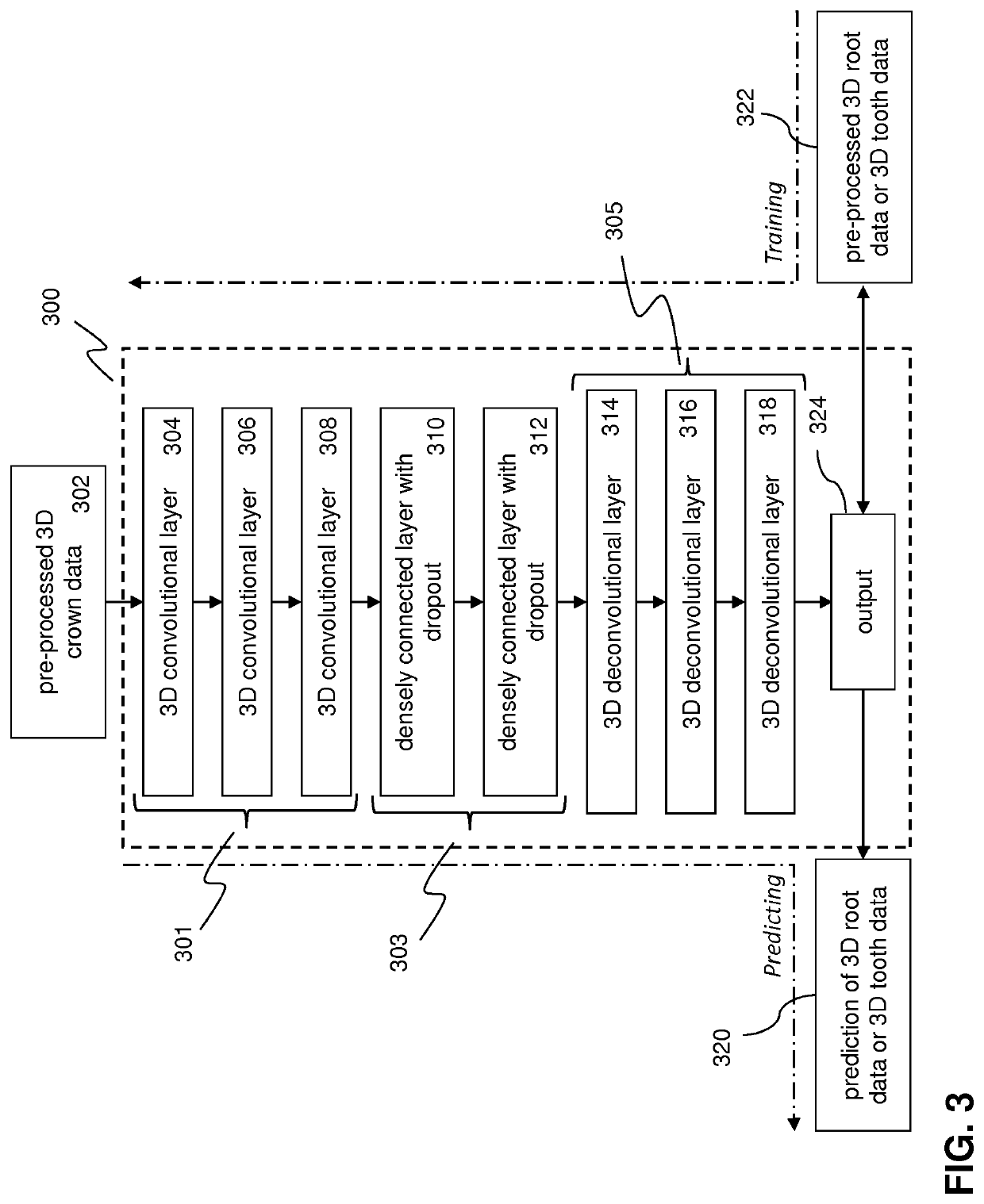Automated 3D root shape prediction using deep learning methods
- Summary
- Abstract
- Description
- Claims
- Application Information
AI Technical Summary
Benefits of technology
Problems solved by technology
Method used
Image
Examples
Embodiment Construction
[0073]In this disclosure embodiments are described of computer systems and computer-implemented methods that use 3D deep neural networks for predicting an anatomically accurate 3D representation of a root on the basis of 3D data defining a 3D representation of a crown (in short 3D crown data). The 3D crown data may be derived from different data sources. For example, the 3D crown data may be derived from a 3D surface mesh representing teeth crowns of dentition generated by an 3D optical scanner, e.g. an intra-oral optical scanner. Alternatively, the 3D crown data may be derived from e.g. a 3D voxel representation representing a dento-maxillofacial structure (including teeth crowns) generated by a 3D X-ray scanner such as a CBCT scanner. The 3D deep neural network may be trained on the basis of clinical 3D data, e.g. 3D data defining a representation of real teeth. A computer system according to the invention may comprise at least one 3D deep neural network which is trained to genera...
PUM
 Login to View More
Login to View More Abstract
Description
Claims
Application Information
 Login to View More
Login to View More - R&D
- Intellectual Property
- Life Sciences
- Materials
- Tech Scout
- Unparalleled Data Quality
- Higher Quality Content
- 60% Fewer Hallucinations
Browse by: Latest US Patents, China's latest patents, Technical Efficacy Thesaurus, Application Domain, Technology Topic, Popular Technical Reports.
© 2025 PatSnap. All rights reserved.Legal|Privacy policy|Modern Slavery Act Transparency Statement|Sitemap|About US| Contact US: help@patsnap.com



